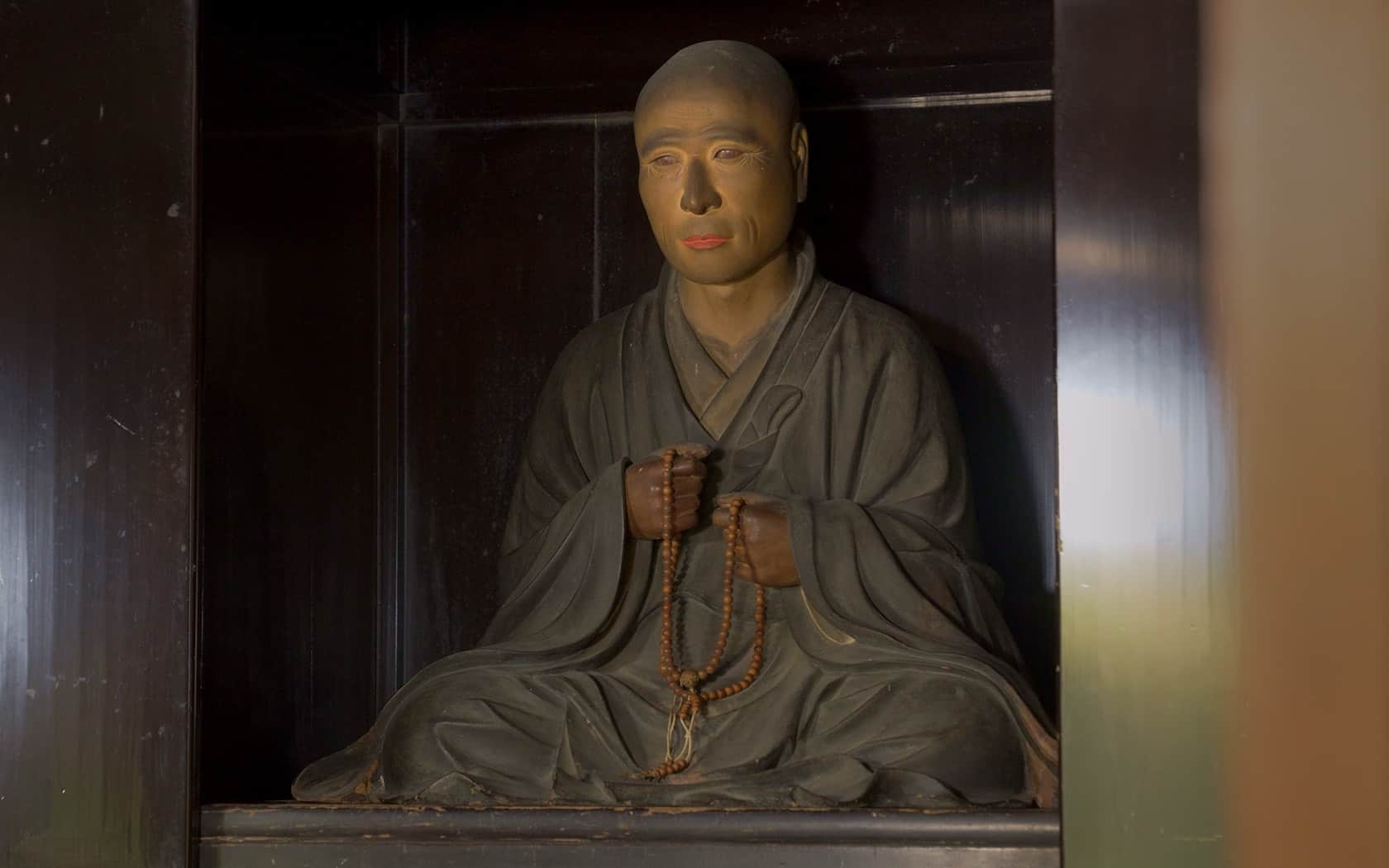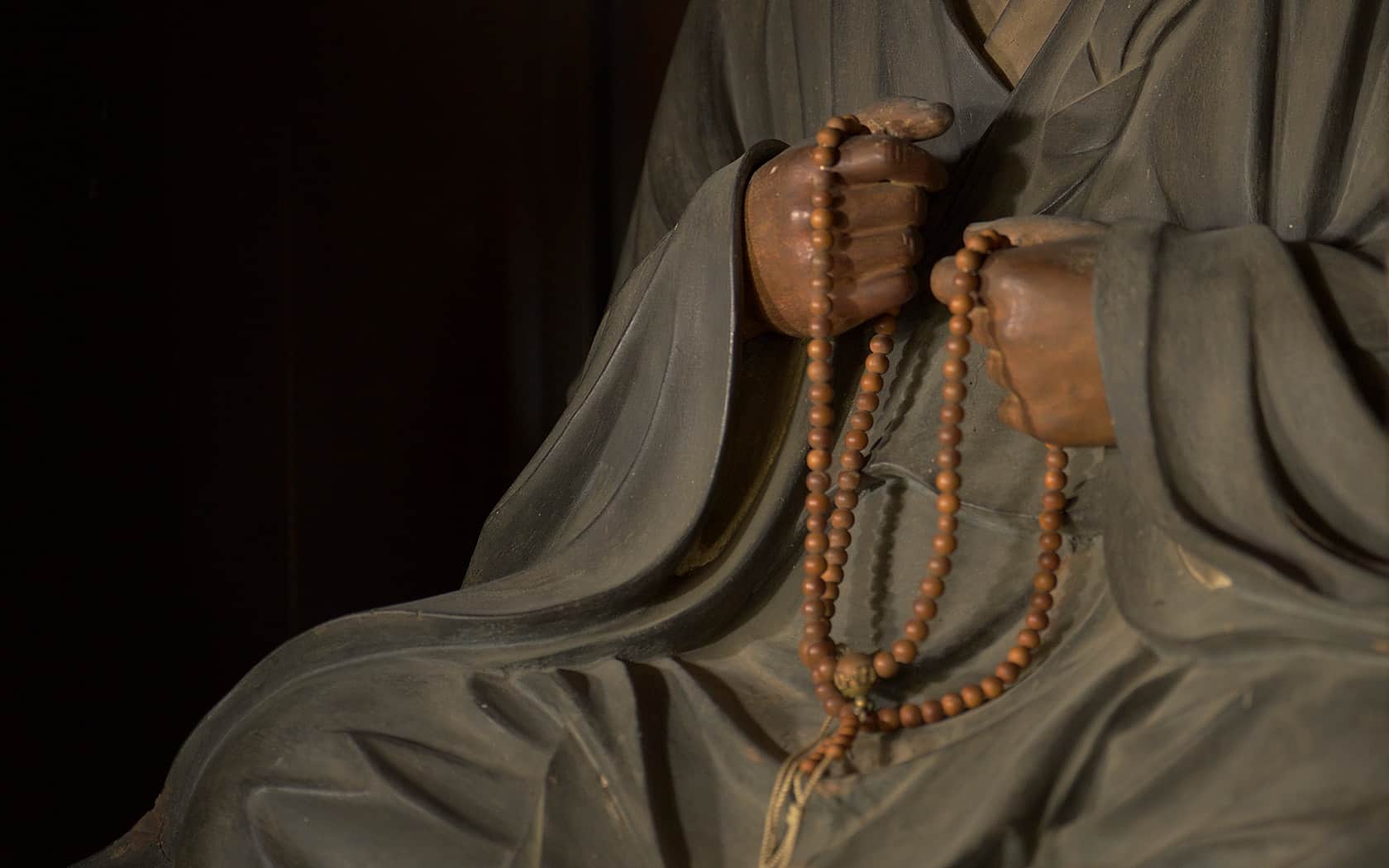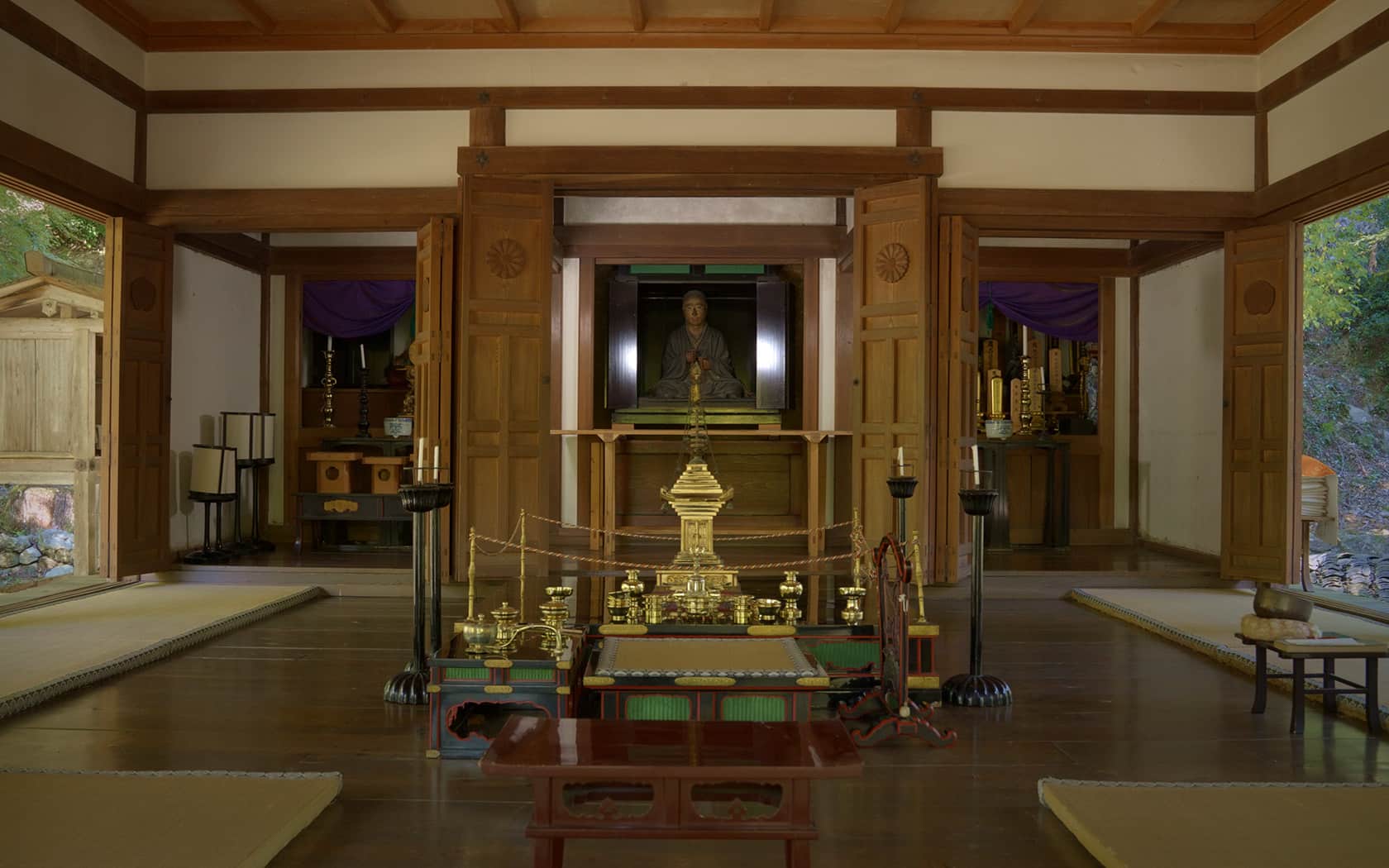This life-sized wooden statue of Myoe Shonin is enshrined in the Kaisando hall. It depicts him seated in black robes, draped with a kasaya and holding prayer beads. The expression conveys both severity and warmth, capturing the essence of Myoe Shonin's appearance. Compared to the Painting of Myoe Meditating in a Tree, a National Treasure held by Kosanji, this representation appears youthful.
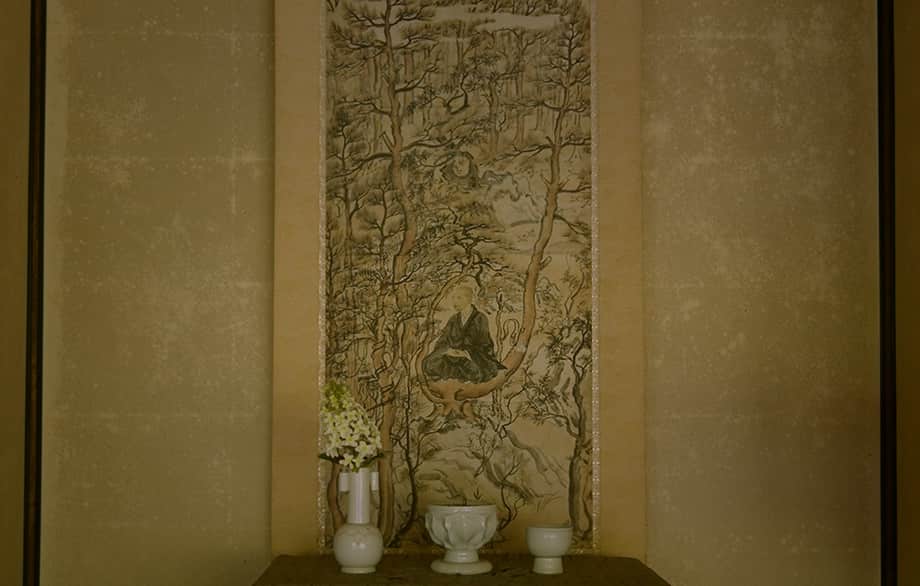
Myoe
Born in 1173 in present-day Yuasa, Aridagawa Town, Wakayama Prefecture, Myoe was a Buddhist monk known for rejuvenating the Huayan sect of Buddhism. After becoming a priest under Mongaku at Jingoji Temple, he studied Kegon Buddhism at Todaiji Temple and received the secret teachings from Konen at Kajuji Temple. He was awarded the land of Togano by Retired Emperor Gotoba in 1206 and built Kosanji Temple as the center of the Huayan sect. He died in 1232.
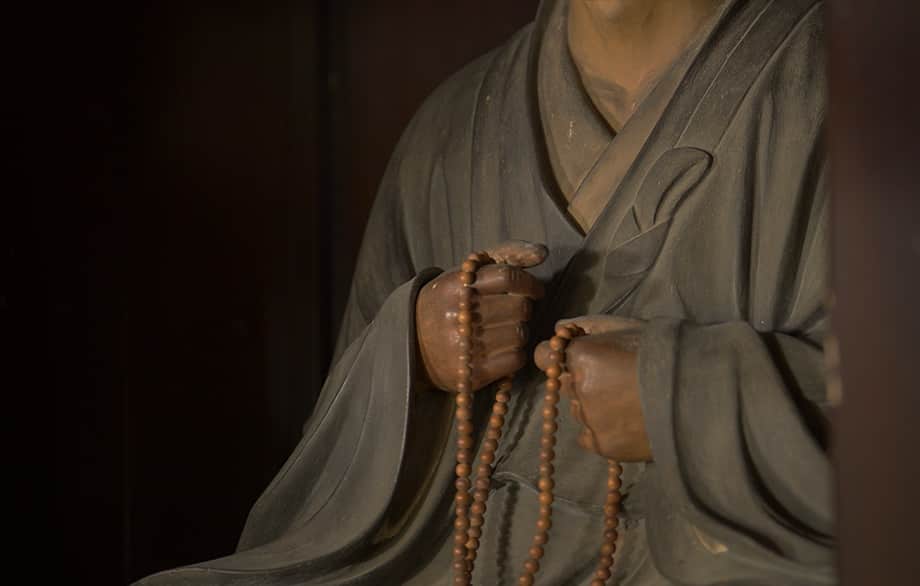
kasaya
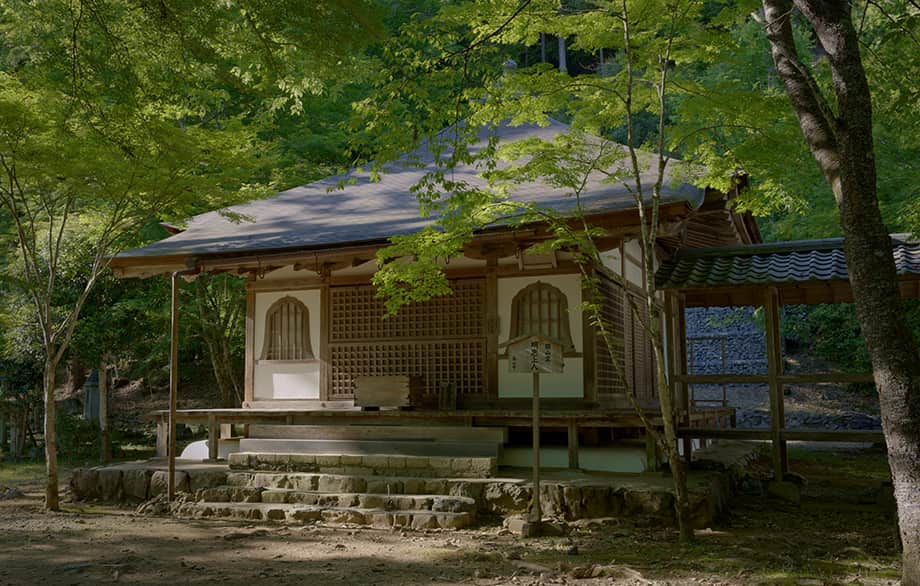
kaisando hall
A hall where statues and mortuary tablets of monks who founded sects or temples are enshrined.
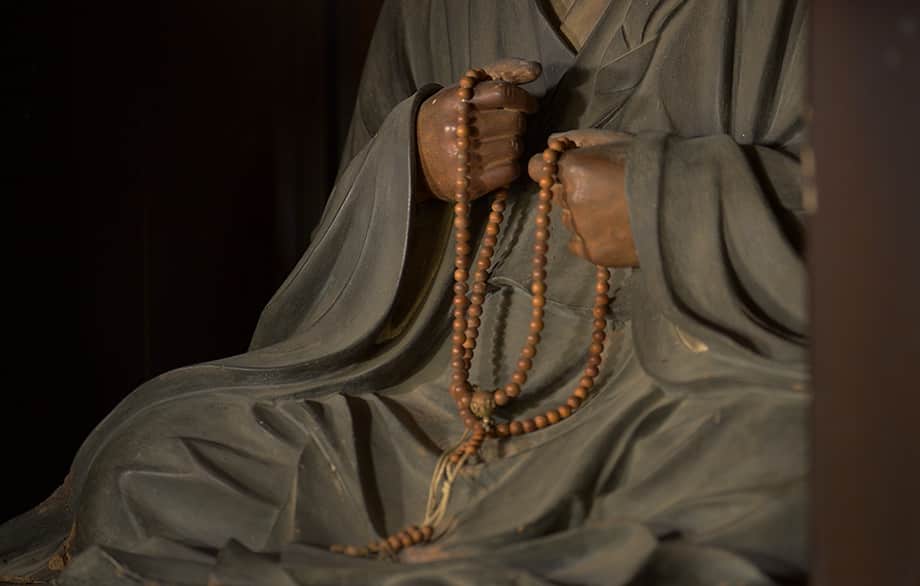
prayer beads

Painting of Myoe Meditating in a Tree
It is not usually on public display, but the miniature shrine's doors are opened twice a year during the memorial service on January 19th, the anniversary of Myoe Shonin's passing, and during the tea offering ceremony on November 8th.
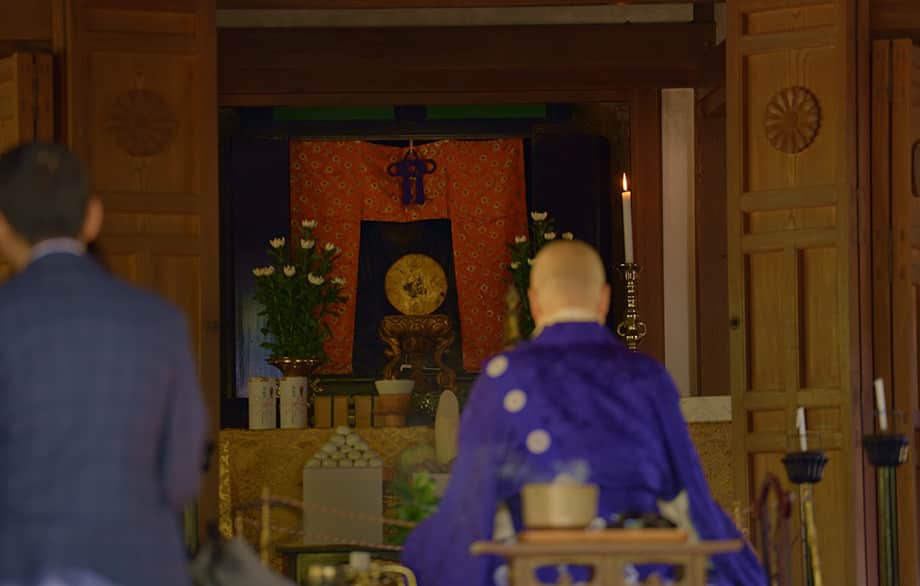
tea offering ceremony
miniature shrine
A sacred space for enshrining items such as Buddhist statues, relics, and sutra scrolls.


